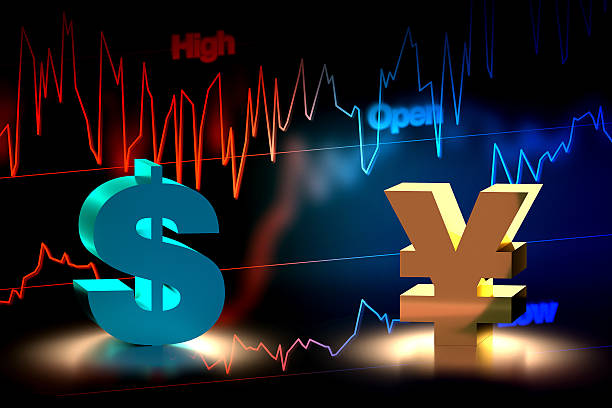Japanese Yen Rally ahead of BoJ Rate Hikes and Trade Tensions.
The Japanese Yen (JPY) has demonstrated a notable appreciation against the US Dollar (USD), influenced by a confluence of economic indicators, monetary policy decisions, and global market dynamics. This comprehensive analysis delves into the multifaceted factors contributing to the Yen’s strengthening position, providing insights into Japan’s economic performance, the Bank of Japan’s (BoJ) monetary policy stance, contrasting approaches by the Federal Reserve, the impact of trade tensions, and future projections.
Japan’s Economic Performance: A Closer Look
In the fourth quarter of 2024, Japan’s economy expanded at an annualized rate of 2.2%, a downward revision from the initial estimate of 2.8% . This adjustment was primarily attributed to weaker consumer spending and higher private inventories. Despite this slowdown, the economy marked its third consecutive quarter of growth, prompting the government to maintain a moderate recovery outlook.
Key Economic Indicators:
- Private Demand: Experienced a contraction of 0.3%, reflecting cautious consumer behavior.
- Exports: Grew by 1.0%, indicating resilience in external demand.
- Seasonally Adjusted Real GDP: Increased by 0.6% from the previous quarter, slightly below the earlier estimate of 0.7%.
These figures underscore the challenges Japan faces in stimulating domestic consumption while benefiting from external demand.
Bank of Japan’s Monetary Policy: Navigating Economic Uncertainties
The BoJ has been proactive in adjusting its monetary policy to align with evolving economic conditions. In January 2025, the central bank raised its key short-term interest rate by 25 basis points to 0.5%, the highest level in 17 years . This decision was influenced by momentum in wage hikes and steady progress in inflation.
Future Rate Hike Speculations:
Kazuo Momma, a former executive director in charge of monetary policy at the BoJ, indicated that the next rate hike is likely to occur in June 2025 . He emphasized the importance of maintaining market expectations and suggested that the timing could be adjusted based on economic and financial market conditions.
Federal Reserve’s Stance: A Contrast in Approaches
In contrast to the BoJ’s tightening measures, the Federal Reserve has adopted a more cautious approach. Recent data indicates a slight deceleration in U.S. inflation, with economists projecting a year-over-year rate of 2.9% for February, down from 3% in January. Despite this cooling, inflation remains above the Fed’s target of 2%.
Federal Reserve’s Position:
Fed Chair Jerome Powell has emphasized a “wait and see” strategy in response to significant economic policy changes, including tariffs and federal worker layoffs. This stance reflects the Fed’s commitment to data-driven decision-making amidst economic uncertainties.
Trade Tensions and Safe-Haven Flows: Impact on the Japanese Yen.
Global economic uncertainties, particularly concerning trade policies, have significantly influenced currency markets. President Donald Trump’s recent comments about a “period of transition” have heightened investor concerns about a potential economic slowdown in the U.S., leading to a selloff in stocks and a shift towards safer assets like the Japanese yen . This flight to safety has bolstered the yen’s value, reflecting its status as a haven currency during periods of market turbulence.
USDJPY Exchange Rate Dynamics: A Year in Review
The USDJPY exchange rate has experienced notable fluctuations in 2025. The highest exchange rate was 158.35 yen per US dollar on January 8, while the lowest was 147.98 yen per US dollar on March 6 . These movements reflect the dynamic interplay of monetary policies, economic indicators, and market sentiments influencing the currency pair.
Average Exchange Rate:
In 2025, the average exchange rate from US Dollars to Japanese Yen was 153.64 Japanese Yen per US Dollar . This average underscores the yen’s appreciation trend over the year.
Market Speculations and Investor Behavior
Speculators have been increasingly bullish on the yen, placing record bets on its appreciation. This optimism is driven by expectations of further interest rate hikes by the BoJ, especially in light of stronger inflation data. Net long positions in yen futures among non-commercial traders surged to 96,000 contracts in the week ending February 25, a record high in over 30 years. This speculative behavior underscores the market’s anticipation of a strengthening yen.
Global Economic Indicators: A Broader Perspective
Beyond Japan and the US global economic indicators have played a role in currency dynamics. China’s consumer prices fell sharply, and producer price deflation persisted, prompting Beijing to announce stimulus measures . These developments have contributed to a risk-averse sentiment in global markets, further supporting safe-haven currencies like the yen.
Outlook and Future Projections
The current trajectory of the yen suggests a continuation of its positive bias against the dollar, contingent upon several factors:
1. Monetary Policy Divergence: The BoJ’s inclination towards tightening, juxtaposed with the Federal Reserve’s cautious stance, may further narrow the interest rate differential, supporting yen appreciation.
2. Economic Indicators: Upcoming data releases, particularly inflation reports and employment figures from both economies, will play pivotal roles in shaping monetary policy expectations and, consequently, currency movements.
3. Geopolitical Developments: Ongoing trade negotiations and geopolitical events will continue to influence market risk sentiment, thereby impacting safe-haven flows into the yen.
Conclusion: Navigating the Currency Landscape
The Japanese yen’s recent strength against the US dollar is a manifestation of Japan









